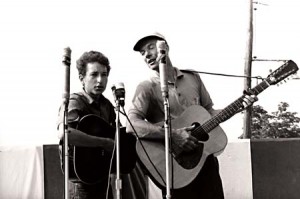Pete Seeger
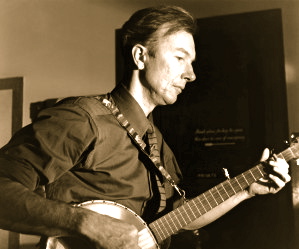
Pete Seeger’s Rainbow Quest: Johnny Cash and June Carter
One of the most influential performers in country music history, Johnny Cash is featured with his wife June Carter in this rare early 1960’s appearance which focuses on his country roots. Cash offers heartfelt performances of some his most famous songs, talks about his early years growing up in Arkansas and sheds light on the sources of his music:
1. Pete Seeger opening medley
2. Johnny Cash: I Am A Pilgrim 8:05
3. June Carter: Worried Man Blues 15:35
4. Johnny Cash: There’s A Mother Always Waiting 24:32
5. Johnny Cash: Five Feet High and Rising 27:50
6. Johnny Cash: Pickin’ time 30:05
7. Pete Seeger: Ki-Yo-Ti 32:42
8. Johnny Cash: As Long as the Grass Shall Grow 39:18
9. Pete Seeger: Little Birdie / Cripple Creek 43:40
10. June Carter: I’m Thinking Tonight of My Blue Eyes 48:25
 Seeger at the Clearwater Festival in June 2007
Seeger at the Clearwater Festival in June 2007
Peter “Pete” Seeger (May 3, 1919 – January 27, 2014) was an American folk singer. A fixture on nationwide radio in the 1940’s, he also had a string of hit records during the early 1950’s as a member of the Weavers, most notably their recording of Lead Belly‘s “Goodnight, Irene,” which topped the charts for 13 weeks in 1950. Members of the Weavers were blacklisted during the McCarthy Era. In the 1960’s, he re-emerged on the public scene as a prominent singer of protest music in support of international disarmament, civil rights, counterculture and environmental causes.
A prolific songwriter, his best-known songs include “Where Have All the Flowers Gone?” (with Joe Hickerson), “If I Had a Hammer (The Hammer Song)” (with Lee Hays of the Weavers), and “Turn! Turn! Turn!” (lyrics adapted from Ecclesiastes), which have been recorded by many artists both in and outside the folk revival movement and are sung throughout the world. “Flowers” was a hit recording for the Kingston Trio (1962); Marlene Dietrich, who recorded it in English, German and French (1962); and Johnny Rivers (1965). “If I Had a Hammer” was a hit for Peter, Paul & Mary (1962) and Trini Lopez (1963), while the Byrds had a number one hit with “Turn! Turn! Turn!” in 1965.
 Seeger was one of the folksingers most responsible for popularizing the spiritual “We Shall Overcome” (also recorded by Joan Baez and many other singer-activists) that became the acknowledged anthem of the 1960’s American Civil Rights Movement, soon after folk singer and activist Guy Carawan introduced it at the founding meeting of the Student Nonviolent Coordinating Committee (SNCC) in 1960. In the PBS American Masters episode “Pete Seeger: The Power of Song“, Seeger stated it was he who changed the lyric from the traditional “We will overcome” to the more singable “We shall overcome.”
Seeger was one of the folksingers most responsible for popularizing the spiritual “We Shall Overcome” (also recorded by Joan Baez and many other singer-activists) that became the acknowledged anthem of the 1960’s American Civil Rights Movement, soon after folk singer and activist Guy Carawan introduced it at the founding meeting of the Student Nonviolent Coordinating Committee (SNCC) in 1960. In the PBS American Masters episode “Pete Seeger: The Power of Song“, Seeger stated it was he who changed the lyric from the traditional “We will overcome” to the more singable “We shall overcome.”
Family and Personal Life
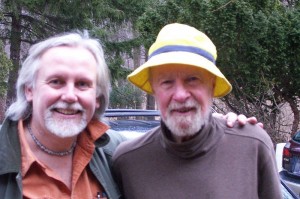 Pete Seeger (right), 88 years old, photographed in March 2008 with his friend, the writer and musician Ed Renehan
Pete Seeger (right), 88 years old, photographed in March 2008 with his friend, the writer and musician Ed Renehan
Seeger was born at the French Hospital, Midtown Manhattan. His Yankee-Protestant family, which Seeger called “enormously Christian, in the Puritan, Calvinist New England tradition,” traced its genealogy back over 200 years. A paternal ancestor, Karl Ludwig Seeger, a physician from Württemberg, Germany, had emigrated to America during theAmerican Revolution and married into an old New England family in the 1780’s. Pete’s father, the Harvard-trained composer and musicologist Charles Louis Seeger, Jr., established the first musicology curriculum in the U.S. at the University of California in 1913, helped found the American Musicological Society, and was a key founder of the academic discipline of ethnomusicology. Pete’s mother, Constance de Clyver Edson, raised in Tunisia and trained at the Paris Conservatory of Music, was a concert violinist and later a teacher at the Juilliard School.
In 1912, Charles Seeger was hired to establish the music department at the University of California, Berkeley, but was forced to resign in 1918 because of his outspoken pacifism during World War I. Charles and Constance moved back east, making Charles’ parents’ estate in Patterson, New York, northeast of New York City, their base of operations. When baby Pete was eighteen months old, they set out with him and his two older brothers in a homemade trailer, on a quixotic mission to bring musical uplift to the working people in the American South. Upon their return, Constance taught violin and Charles taught composition at the New York Institute of Musical Art (later Juilliard), whose president, family friend Frank Damrosch, was Constance’s adoptive “uncle.” Charles also taught part-time at the New School for Social Research. Career and money tensions led to quarrels and reconciliations, but when Charles discovered Constance had opened a secret bank account in her own name, they separated, and Charles took custody of their three sons. Beginning in 1936, Charles held various administrative positions in the federal government’s Farm Resettlement program, the WPA‘s Federal Music Project (1938–1940), and the wartime Pan American Union. After World War II, he taught ethnomusicology at the University of California and Yale University.
 Charles and Constance divorced when Pete was seven, and in 1932 Charles married his composition student and assistant, Ruth Crawford Seeger, now considered by many to be one of the most important modernist composers of the 20th century. Deeply interested in folk music, Ruth had contributed musical arrangements to Carl Sandburg‘s extremely influential folk song anthology the American Songbag (1927) and later created significant original settings for eight of Sandburg’s poems. Pete’s eldest brother, Charles Seeger III, was a radio astronomer, and his next older brother, John Seeger, taught in the 1950s at the Dalton School in Manhattan and was the principal from 1960 to 1976 at Fieldston Lower School in the Bronx. Pete’s uncle, Alan Seeger, a noted poet (“I Have a Rendezvous with Death”), had been one of the first American soldiers to be killed in the First World War. All four of Pete’s half siblings from his father’s second marriage – Margaret (Peggy), Mike, Barbara, and Penelope (Penny) – became folk singers. Peggy Seeger, a well-known performer in her own right, was married for many years to British folk singer and activist Ewan MacColl. Mike Seeger was a founder of the New Lost City Ramblers, one of whose members, John Cohen, married Pete’s half-sister Penny (herself a talented singer who died young); Barbara Seeger joined her siblings in recording folk songs for children. In 1935, Pete attended Camp Rising Sun, an international leadership camp held every summer in upstate New York that influenced his life’s work. He visited most recently in 2012.
Charles and Constance divorced when Pete was seven, and in 1932 Charles married his composition student and assistant, Ruth Crawford Seeger, now considered by many to be one of the most important modernist composers of the 20th century. Deeply interested in folk music, Ruth had contributed musical arrangements to Carl Sandburg‘s extremely influential folk song anthology the American Songbag (1927) and later created significant original settings for eight of Sandburg’s poems. Pete’s eldest brother, Charles Seeger III, was a radio astronomer, and his next older brother, John Seeger, taught in the 1950s at the Dalton School in Manhattan and was the principal from 1960 to 1976 at Fieldston Lower School in the Bronx. Pete’s uncle, Alan Seeger, a noted poet (“I Have a Rendezvous with Death”), had been one of the first American soldiers to be killed in the First World War. All four of Pete’s half siblings from his father’s second marriage – Margaret (Peggy), Mike, Barbara, and Penelope (Penny) – became folk singers. Peggy Seeger, a well-known performer in her own right, was married for many years to British folk singer and activist Ewan MacColl. Mike Seeger was a founder of the New Lost City Ramblers, one of whose members, John Cohen, married Pete’s half-sister Penny (herself a talented singer who died young); Barbara Seeger joined her siblings in recording folk songs for children. In 1935, Pete attended Camp Rising Sun, an international leadership camp held every summer in upstate New York that influenced his life’s work. He visited most recently in 2012.
In 1943, Pete married Toshi-Aline Ōta, whom he credited with being the support that helped make the rest of his life possible. The couple remained married until Toshi’s death in July 2013. Their first child, Peter Ōta Seeger, was born in 1944 and died at six months, while Pete was deployed overseas. Pete never saw him. They went on to have three more children: Daniel (an accomplished photographer and filmmaker), Mika (a potter and muralist), and Tinya (a potter) , as well as grandchildren Tao (a musician), Cassie (an artist), Kitama Cahill-Jackson (a filmmaker), Moraya (a graduate student married to the NFL player Chris DeGeare), Penny, and Isabelle. Tao is a folk musician in his own right, who sings and plays guitar, banjo, and harmonica with the Mammals. Kitama Jackson is a documentary filmmaker who was associate producer of the PBS documentary Pete Seeger: The Power of Song.
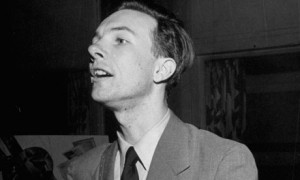 When asked about his religious or spiritual views, Seeger replied: “I feel most spiritual when I’m out in the woods. I feel part of nature. Or looking up at the stars. [I used to say] I was an atheist. Now I say, it’s all according to your definition of God. According to my definition of God, I’m not an atheist. Because I think God is everything. Whenever I open my eyes I’m looking at God. Whenever I’m listening to something I’m listening to God.” He was a member of a Unitarian Universalist Church in New York.
When asked about his religious or spiritual views, Seeger replied: “I feel most spiritual when I’m out in the woods. I feel part of nature. Or looking up at the stars. [I used to say] I was an atheist. Now I say, it’s all according to your definition of God. According to my definition of God, I’m not an atheist. Because I think God is everything. Whenever I open my eyes I’m looking at God. Whenever I’m listening to something I’m listening to God.” He was a member of a Unitarian Universalist Church in New York.
Seeger lived in Beacon, New York. He remained engaged politically and maintained an active lifestyle in the Hudson Valley Region of New York throughout his life. He and Toshi purchased their land in 1949 and lived there first in a trailer, then in a log cabin they built themselves. Toshi Seeger died on July 9, 2013. Pete Seeger died in New York City on January 27, 2014, of natural causes at NewYork–Presbyterian Hospital.
Musical Career – Early Work
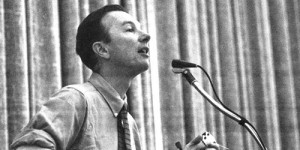 At four, Seeger was sent away to boarding school, but came home two years later, when his parents learned the school had failed to inform them he had contracted scarlet fever. He attended first and second grades in Nyack, New York, where his mother lived, before entering boarding school in Ridgefield, Connecticut. Despite being classical musicians, his parents did not press him to play an instrument. On his own, the otherwise bookish and withdrawn boy gravitated to the ukulele, becoming adept at entertaining his classmates with it, while laying the basis for his subsequent remarkable audience rapport. At thirteen, Seeger enrolled in the Avon Old Farms prep school in Avon, Connecticut where he graduated in 1936. He was selected to attend Camp Rising Sun, the George E. Jonas Foundation‘s international summer leadership program. During the summer of 1936, while traveling with his father and stepmother, Pete heard the five-string banjo for the first time at the Mountain Dance and Folk Festival in western North Carolina near Asheville, organized by local folklorist, lecturer, and traditional music performer Bascom Lamar Lunsford, whom Charles Seeger had hired for Farm Resettlement music projects. The festival took place in a covered baseball field. There the Seegers
At four, Seeger was sent away to boarding school, but came home two years later, when his parents learned the school had failed to inform them he had contracted scarlet fever. He attended first and second grades in Nyack, New York, where his mother lived, before entering boarding school in Ridgefield, Connecticut. Despite being classical musicians, his parents did not press him to play an instrument. On his own, the otherwise bookish and withdrawn boy gravitated to the ukulele, becoming adept at entertaining his classmates with it, while laying the basis for his subsequent remarkable audience rapport. At thirteen, Seeger enrolled in the Avon Old Farms prep school in Avon, Connecticut where he graduated in 1936. He was selected to attend Camp Rising Sun, the George E. Jonas Foundation‘s international summer leadership program. During the summer of 1936, while traveling with his father and stepmother, Pete heard the five-string banjo for the first time at the Mountain Dance and Folk Festival in western North Carolina near Asheville, organized by local folklorist, lecturer, and traditional music performer Bascom Lamar Lunsford, whom Charles Seeger had hired for Farm Resettlement music projects. The festival took place in a covered baseball field. There the Seegers
watched square-dance teams from Bear Wallow, Happy Hollow, Cane Creek, Spooks Branch, Cheoah Valley, Bull Creek, and Soco Gap; heard the five-string banjo player Samantha Bumgarner; and family string bands, including a group of Indians from the Cherokee reservation who played string instruments and sang ballads. They wandered among the crowds who camped out at the edge of the field, hearing music being made there as well. As Lunsford’s daughter would later recall, those country people “held the riches that Dad had discovered. They could sing, fiddle, pick the banjos, and guitars with traditional grace and style found nowhere else but deep in the mountains. I can still hear those haunting melodies drift over the ball park.”
For the Seegers, experiencing the beauty of this music firsthand was a “conversion experience”. Pete was deeply affected and, after learning basic strokes from Lunsford, spent much of the next four years trying to master the five-string banjo. The teenage Seeger also sometimes accompanied his parents to regular Saturday evening gatherings at the Greenwich Village loft of painter and art teacher Thomas Hart Benton and his wife Rita. Benton, a lover of Americana, played “Cindy” and “Old Joe Clark” with his students Charlie and Jackson Pollock; friends from the “hillbilly” recording industry; as well as avant-garde composers Carl Ruggles and Henry Cowell. It was at one of Benton’s parties that Pete heard “John Henry” for the first time. Seeger enrolled at Harvard College on a partial scholarship, but as he became increasingly involved with politics and folk music, his grades suffered and he lost his scholarship. He dropped out of college in 1938. He dreamed of a career in journalism and also took courses in art. His first musical gig was leading students in folk singing at the Dalton School, where his aunt was principal. He polished his performance skills during a summer stint of touring New York State with The Vagabond Puppeteers (Jerry Oberwager, 22; Mary Wallace, 22; and Harriet Holtzman, 23), a traveling puppet theater“inspired by rural education campaigns of post-revolutionary Mexico.” One of their shows coincided with a strike by dairy farmers. The group reprised its act in October in New York City. An article in the October 2, 1939, Daily Worker reported on the Puppeteers’ six-week tour this way:
During the entire trip the group never ate once in a restaurant. They slept out at night under the stars and cooked their own meals in the open, very often they were the guests of farmers. At rural affairs and union meetings, the farm women would bring “suppers” and would vie with each other to see who could feed the troupe most, and after the affair the farmers would have earnest discussions about who would have the honor of taking them home for the night.
“They fed us too well,” the girls reported. “And we could live the entire winter just by taking advantage of all the offers to spend a week on the farm.”
In the farmers’ homes they talked about politics and the farmers’ problems, about antisemitism and Unionism, about war and peace and social security—”and always,” the puppeteers report, “the farmers wanted to know what can be done to create a stronger unity between themselves and city workers. They felt the need of this more strongly than ever before, and the support of the CIO in their milk strike has given them a new understanding and a new respect for the power that lies in solidarity. One summer has convinced us that a minimum of organized effort on the part of city organizations—unions, consumers’ bodies, the American Labor Party and similar groups—can not only reach the farmers but weld them into a pretty solid front with city folks that will be one of the best guarantees for progress.
That fall Seeger took a job in Washington, D.C., assisting Alan Lomax, a friend of his father’s, at the Archive of American Folk Song of the Library of Congress. Seeger’s job was to help Lomax sift through commercial “race” and “hillbilly” music and select recordings that best represented American folk music, a project funded by the music division of the Pan American Union (later the Organization of American States), of whose music division his father, Charles Seeger, was head (1938–53). Lomax also encouraged Seeger’s folk singing vocation, and Seeger was soon appearing as a regular performer on Alan Lomax and Nicholas Ray‘s weekly Columbia Broadcasting show Back Where I Come From (1940–41) alongside of Josh White, Burl Ives, Lead Belly, and Woody Guthrie (whom he had first met at Will Geer‘s Grapes of Wrath benefit concert for migrant workers on March 3, 1940). Back Where I Come From was unique in having a racially integrated cast, which made news when it performed in March 1941 at a command performance at the White House organized by Eleanor Roosevelt called “An Evening of Songs for American Soldiers,” before an audience that included the Secretaries of War, Treasury, and the Navy, among other notables. The show was a success but was not picked up by commercial sponsors for nationwide broadcasting because of its integrated cast. During the war, Seeger also performed on nationwide radio broadcasts by Norman Corwin.
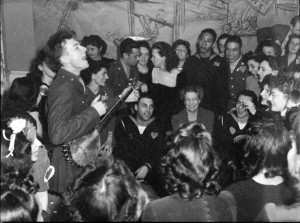 Pete Seeger entertaining Eleanor Roosevelt (center), honored guest at a racially integrated Valentine’s Day party marking the opening of a Canteen of the United Federal Labor, CIO, in then-segregated Washington, D.C. Photographed by Joseph Horne for the Office of War Information, 1944.
Pete Seeger entertaining Eleanor Roosevelt (center), honored guest at a racially integrated Valentine’s Day party marking the opening of a Canteen of the United Federal Labor, CIO, in then-segregated Washington, D.C. Photographed by Joseph Horne for the Office of War Information, 1944.
In 1949 Pete Seeger worked as the Vocal Instructor for the progressive City and Country School in Greenwich Village, New York.
Group Recordings
As a self-described “split tenor” (between an alto and a tenor), Pete Seeger was a founding member of two highly influential folk groups: The Almanac Singers and the Weavers. The Almanac Singers, which Seeger co-founded in 1941 with Millard Lampell and Arkansas singer and activist Lee Hays, was a topical group, designed to function as a singing newspaper promoting the industrial unionization movement, racial and religious inclusion, and other progressive causes. Its personnel included, at various times: Woody Guthrie, Bess Lomax Hawes, Sis Cunningham, Josh White, and Sam Gary. As a controversial Almanac singer, the 21-year-old Seeger performed under the stage name “Pete Bowers” to avoid compromising his father’s government career.
In 1950, the Almanacs were reconstituted as the Weavers, named after the title of an 1892 play by Gerhart Hauptmann about a workers’ strike (which contained the lines, “We’ll stand it no more, come what may!”). Besides Pete Seeger (performing under his own name), members of the Weavers included charter Almanac member Lee Hays, Ronnie Gilbert and Fred Hellerman; later Frank Hamilton, Erik Darling and Bernie Krause serially took Seeger’s place. In the atmosphere of the 1950s red scare, the Weavers’ repertoire had to be less overtly topical than that of the Almanacs had been, and its progressive message was couched in indirect language—arguably rendering it even more powerful. The Weavers on occasion performed in tuxedos (unlike the Almanacs, who had dressed informally) and their managers refused to let them perform at political venues. The Weavers’ string of major hits began with “On Top of Old Smoky” and an arrangement of Lead Belly‘s signature waltz, “Goodnight, Irene,”[4] which topped the charts for 13 weeks in 1950 and was covered by many other pop singers. On the flip side of “Irene” was the Israeli song “Tzena, Tzena, Tzena.” Other Weaver hits included Dusty Old Dust” (“So Long It’s Been Good to Know You” by Woody Guthrie), “Kisses Sweeter Than Wine” (by Hays, Seeger, and Lead Belly) and the South African Zulu song by Solomon Linda, “Wimoweh” (about Shaka), among others.
The Weavers’ performing career was abruptly derailed in 1953 at the peak of their popularity when blacklisting prompted radio stations to refuse to play their records and all their bookings were canceled. They briefly returned to the stage, however, at a sold-out reunion at Carnegie Hall in 1955 and in a subsequent reunion tour, which produced a hit version of Merle Travis‘s “Sixteen Tons” as well as LP’s of their concert performances. “Kumbaya,” a Gullah black spiritual dating from slavery days, was also introduced to wide audiences by Pete Seeger and the Weavers (in 1959), becoming a staple of Boy and Girl Scout campfires.
In the late 1950’s, the Kingston Trio was formed in direct imitation of (and homage to) the Weavers, covering much of the latter’s repertoire, though with a more buttoned-down, uncontroversial, and mainstream collegiate persona. The Kingston Trio produced another phenomenal succession of Billboard chart hits and in its turn spawned a legion of imitators, laying the groundwork for the 1960s commercial folk revival.
In the documentary film Pete Seeger: The Power of Song (2007), Seeger states that he resigned from the Weavers when the three other band members agreed to perform a jingle for a cigarette commercial.
In 1948, Seeger wrote the first version of his now-classic How to Play the Five-String Banjo, a book that many banjo players credit with starting them off on the instrument. He went on to invent the Long Neck or Seeger banjo. This instrument is three frets longer than a typical banjo, is slightly longer than a bass guitar at 25 frets, and is tuned a minor third lower than the normal 5-string banjo. Hitherto strictly limited to the Appalachian region, the five-string banjo became known nationwide as the American folk instrument par excellence, largely thanks to Seeger’s championing of and improvements to it. According to an unnamed musician quoted in David King Dunaway‘s biography, “by nesting a resonant chord between two precise notes, a melody note and a chiming note on the fifth string”, Pete Seeger “gentrified” the more percussive traditional Appalachian “frailing” style, “with its vigorous hammering of the forearm and its percussive rapping of the fingernail on the banjo head.” Although what Dunaway’s informant describes is the age-old droned frailing style, the implication is that Seeger made this more acceptable to mass audiences by omitting some of its percussive complexities, while presumably still preserving the characteristic driving rhythmic quality associated with the style.
From the late 1950s on, Seeger also accompanied himself on the 12-string guitar, an instrument of Mexican origin that had been associated with Lead Belly, who had styled himself “the King of the 12-String Guitar”. Seeger’s distinctive custom-made guitars had a triangular soundhole. He combined the long scale length (approximately 28″) and capo-to-key techniques that he favored on the banjo with a variant of drop-D (DADGBE) tuning, tuned two whole steps down with very heavy strings, which he played with thumb and finger picks.
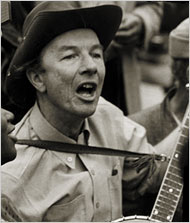 Introduction of the “Steel Pan” to U.S. Audiences
Introduction of the “Steel Pan” to U.S. Audiences
In 1956, then “Peter” Seeger (see film credits) and his wife, Toshi, traveled to Port of Spain, Trinidad, to seek out information on the steelpan, steel drum or “Ping-Pong” as it was sometimes called. The two searched out a local panyard director Isaiah, and proceeded to film the construction, tuning and playing of the then new, national instrument of Trinidad-Tobago. He was attempting to include the unique flavor of the steel pan into America Folk music.
Later work – 2000–2009
On March 16, 2007, Pete Seeger, his sister Peggy, his brothers Mike and John, his wife Toshi, and other family members spoke and performed at a symposium and concert sponsored by the American Folklife Center in honor of the Seeger family, held at the Library of Congress in Washington, D.C., where Pete Seeger had been employed by the Archive of American Folk Song 67 years earlier.
In September 2008, Appleseed Recordings released At 89, Seeger’s first studio album in 12 years. On September 29, 2008, the 89-year-old singer-activist, once banned from commercial TV, made a rare national TV appearance on the Late Show with David Letterman, singing “Take It From Dr. King”.
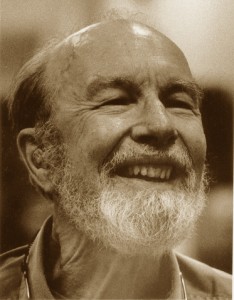 On January 18, 2009, Seeger joined Bruce Springsteen, grandson Tao Rodríguez-Seeger, and the crowd in singing the Woody Guthriesong “This Land Is Your Land” in the finale of Barack Obama’s Inaugural concert in Washington, D.C. The performance was noteworthy for the inclusion of two verses not often included in the song, one about a “private property” sign the narrator cheerfully ignores, and the other making a passing reference to a Depression-era relief office.
On January 18, 2009, Seeger joined Bruce Springsteen, grandson Tao Rodríguez-Seeger, and the crowd in singing the Woody Guthriesong “This Land Is Your Land” in the finale of Barack Obama’s Inaugural concert in Washington, D.C. The performance was noteworthy for the inclusion of two verses not often included in the song, one about a “private property” sign the narrator cheerfully ignores, and the other making a passing reference to a Depression-era relief office.
On April 18, 2009, Pete Seeger performed in front of a small group of Earth Day celebrants at Teachers College in New York City. Among the songs he performed were “This Land is Your Land”, “Take it From Dr. King”, and “She’ll Be Coming ‘Round the Mountain”.
On May 3, 2009, at the Clearwater Concert, dozens of musicians gathered in New York at Madison Square Garden to celebrate Seeger’s 90th birthday (which was later televised on PBS during the summer), ranging from Dave Matthews, John Mellencamp, Billy Bragg, Bruce Springsteen, Tom Morello, Eric Weissberg, Ani DiFranco and Roger McGuinn to Joan Baez, Richie Havens, Joanne Shenandoah, R. Carlos Nakai, Bill Miller, Joseph Fire Crow, Margo Thunderbird, Tom Paxton, Ramblin’ Jack Elliott and Arlo Guthrie. Cuban singer-songwriter Silvio Rodríguez was also invited to appear but his visa was not approved in time by the US government. Consistent with Seeger’s long-time advocacy for environmental concerns, the proceeds from the event benefited the Hudson River Sloop Clearwater, a non-profit organization founded by Seeger in 1966, to defend and restore the Hudson River. Seeger’s 90th Birthday was also celebrated at The College of Staten Island on May 4.
On September 19, 2009 Pete Seeger made his first appearance at the 52nd Monterey Jazz Festival, particularly notable because the Festival does not normally feature folk artists.
2010–2014
 In 2010, still active at the age of 91, Seeger co-wrote and performed the song God’s Counting on Me, God’s Counting on You with Lorre Wyatt, commenting on the Deepwater Horizon oil spill.
In 2010, still active at the age of 91, Seeger co-wrote and performed the song God’s Counting on Me, God’s Counting on You with Lorre Wyatt, commenting on the Deepwater Horizon oil spill.
On October 21, 2011, at age 92, Pete Seeger was part of a solidarity march with Occupy Wall Street to Columbus Circle in New York City. The march began with Seeger and fellow musicians exiting Symphony Space (95th and Broadway), where they had performed as part of a benefit for Seeger’s Clearwater organization. Thousands of people crowded Pete Seeger by the time they reached Columbus Circle. Pete Seeger performed with his grandson, Tao Rodriguez-Seeger, Arlo Guthrie, David Amram, and other celebrated musicians. The event, promoted under the name Occupy The Circle, was LiveStreamed, and dubbed by some as “The Pete Seeger March.”
He contributed a spoken version of “Forever Young” to the 2012 album Chimes of Freedom: Songs of Bob Dylan Honoring 50 Years of Amnesty International. He recorded the song with community children’s chorus, Rivertown Kids, who were previously featured on Tomorrows’ Children.
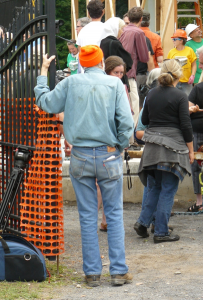 Seeger looks on as a ceremony concludes marking the raising of the new home winter port in Kingston, New York, of the Sloop Clearwater, Sep 15, 2012
Seeger looks on as a ceremony concludes marking the raising of the new home winter port in Kingston, New York, of the Sloop Clearwater, Sep 15, 2012
On April 26, 2012, tens of thousands of Norwegians gathered in a show of unity at a rally in Oslo to sing Pete Seeger’s song “My Rainbow Race” which a mass murderer had ridiculed as an example of “Marxist” brainwashing. The gunman was on trial for killing 77 people on July 22, 2011, insisting that his victims, who included 69 children, were traitors. The song, which Seeger wrote in 1971 to protest the war in Vietnam, has long been a popular children’s song in Norway. Its lyrics include the lines:
Some want to take the easy way
Poisons, bombs! They think we need ’em.
Don’t they know you can’t kill all the unbelievers.
There’s no shortcut to freedom.
Folksinger Lillebjørn Nilsen, author of the Norwegian version, led a crowd of over 40,000 in singing in both Norwegian and English. “I grew up with this song and have sung it to my child,” said Lill Hjønnevåg, one of the organizers of the demonstration.” Another organizer, blogger Bagnhild Holmås, said that although song might be Utopian, “the message is far from cheesy. ‘The killer’ thinks we’re brainwashed anyway, but it’s important to show our distance…” Culture ministers from Sweden, Denmark, the Faroe Islands and Iceland joined in the singing. From the U.S. Pete Seeger voiced his support of the event.
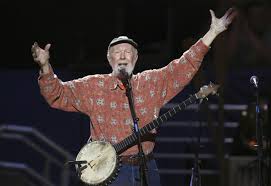 On July 18, 2012, Pete Seeger appeared at Bryant Park in New York City to sign copies of his new (2012) biography, Pete Seeger: His Life in His Own Words, written with Rob Rosenthal and Sam Rosenthal. He also spoke about his life and career.
On July 18, 2012, Pete Seeger appeared at Bryant Park in New York City to sign copies of his new (2012) biography, Pete Seeger: His Life in His Own Words, written with Rob Rosenthal and Sam Rosenthal. He also spoke about his life and career.
On August 6, 2012, Pete Seeger appeared on the Colbert Report to speak with Stephen Colbert about his new book, Pete Seeger: His Life in His Own Words, and also to perform “Quite Early Morning” on the banjo.
On Election Day, November 6, 2012, Pete Seeger released the music video and single of God’s Counting on Me, God’s Counting on You (Sloop Mix) produced live on the Hudson River Sloop Clearwater by Richard Barone and Matthew Billy.
On November 24, 2012, Pete Seeger performed with Arlo Guthrie and the Guthrie family in a concert at Carnegie Hall.
On December 14, 2012, Seeger performed, along with Harry Belafonte, Jackson Browne, Common and others, at a concert to bring awareness to the 37-year-long ordeal of Native American Activist Leonard Peltier. The concert was held at the Beacon Theater in New York City.
On April 9, 2013, Hachette Audio Books issued an audiobook entitled “Pete Seeger: The Storm King; Stories, Narratives, Poems.” This two-CD spoken-word work was conceived of and produced by noted percussionist Jeff Haynes and presents Pete Seeger telling the stories of his life against a background of music performed by more than 40 musicians of varied genres. The launch of the audiobook was held at the Dia:Beacon on April 11, 2013 to an enthusiastic audience of around two hundred people, and featured many of the musicians from the project (among them Samite, Dar Williams, Dave Eggar and Richie Stearns of the Horse Flies and Natalie Merchant) performing live under the direction of producer and percussionist Haynes. April 15, 2013, Sirius XM Book Radio presented the Dia:Beacon concert as a special episode of “Cover to Cover Live with Maggie Linton and Kim Alexander” entitled “Pete Seeger:The Storm King and Friends.”
On August 9, 2013, one month widowed, Pete Seeger was in New York City for a 400 year commemoration of the Two Row Wampum Treaty between the Iroquois and the Dutch. On an interview he gave that day to Democracy Now!, Seeger sang “I Come and Stand at Every Door” as it was also the 68th anniversary of the Hiroshima and Nagasaki atomic bombings.
On September 21, 2013, Pete Seeger performed at Farm Aid at the Saratoga Performing Arts Center in Saratoga Springs New York. Joined by Wille Nelson, Neil Young, John Mellencamp, and Dave Matthews, he sang “This Land Is Your Land” and included a verse he said he had written specifically for the Farm Aid concert.
Death
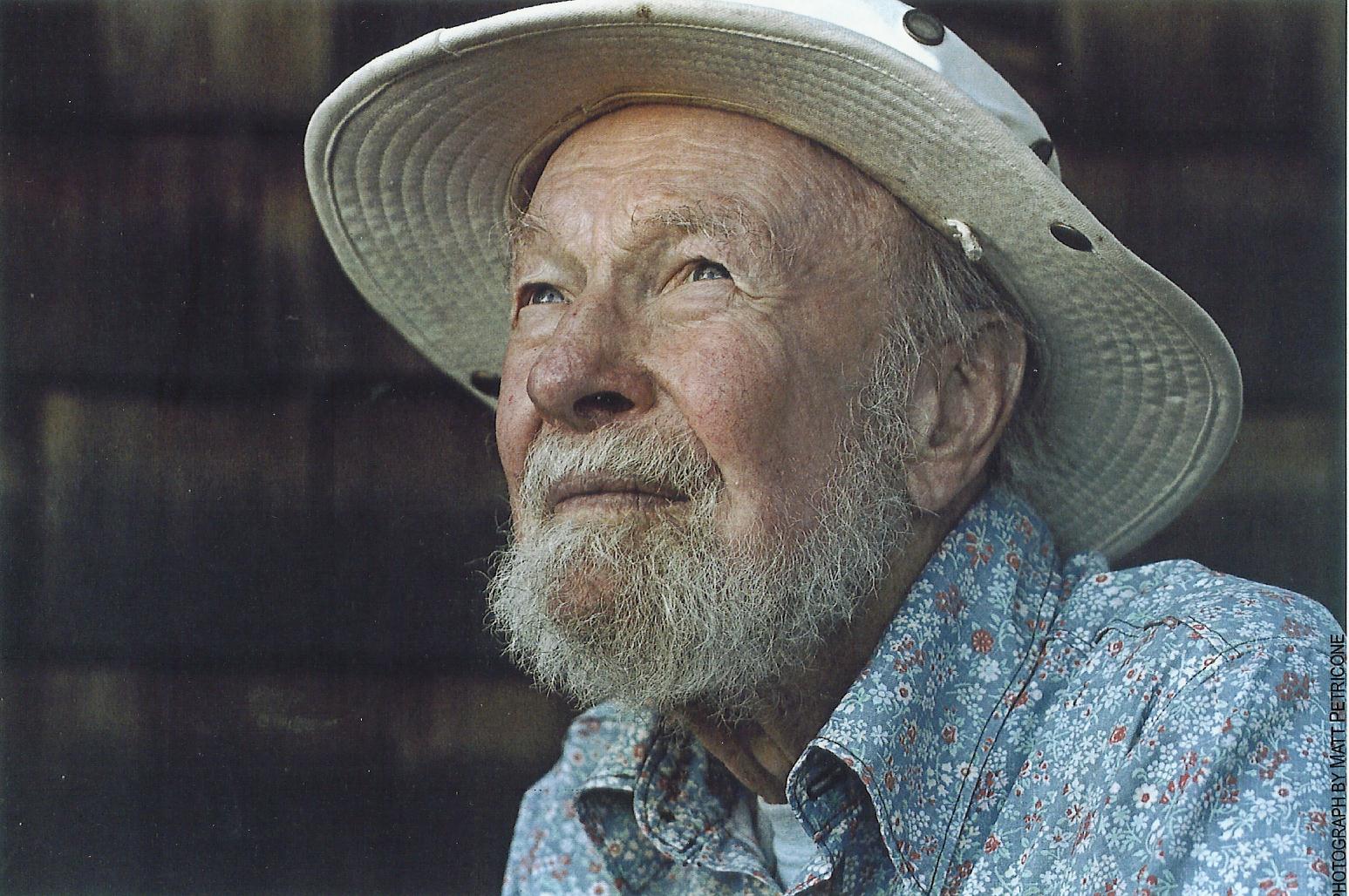
Seeger died on January 27, 2014 at the age of 94. Seeger’s grandson, Kitama Cahill-Jackson, said his grandfather died peacefully in his sleep around 9:30 p.m. at New York’s Presbyterian Hospital, where he had been for six days. Family members were with him at the time of his death. Cahill-Jackson said Seeger was still as active as ever, out chopping wood ten days prior to his death.
Response and reaction to Seeger’s death quickly poured in. Bruce Springsteen said of Seeger’s passing “I lost a great friend and a great hero last night, Pete Seeger” before performing “We Shall Overcome” while on tour in South Africa. President Barack Obama called Seeger “America’s tuning fork” who believed in “”the power of song” to bring social change. “Over the years, Pete used his voice and his hammer to strike blows for worker’s rights and civil rights; world peace and environmental conservation and he always invited us to sing along. For reminding us where we come from and showing us where we need to go, we will always be grateful to Pete Seeger. Michelle and I send our thoughts and prayers to Pete’s family and all those who loved him.”

